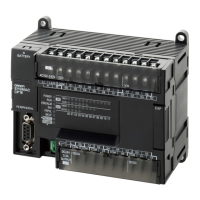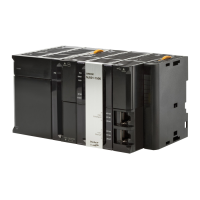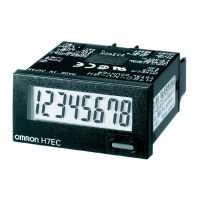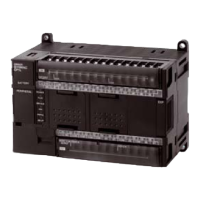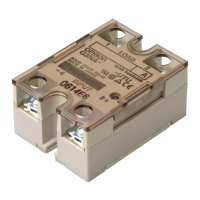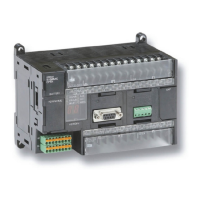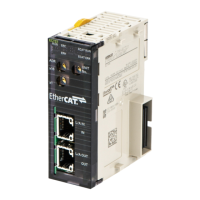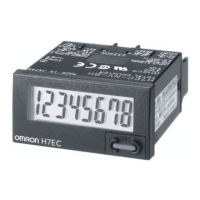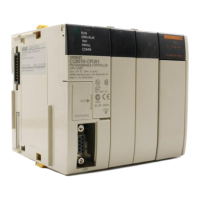12-61
12 Pulse Outputs
CP2E CPU Unit Software User’s Manual(W614)
12-10 Precautions when Using Pulse Outputs
12
12-9-3 Palletize: Two-axis Multipoint Positioning
The CP2E CPU Unit’s pulse output function performs a basic error check before starting to output
pulses (when the instruction is executed) and will not output pulses if the settings are incorrect.
There are other errors that can occur with the origin search function during pulse output, which may
stop the pulse output.
If an error occurs that stops pulse output, the pulse output’s Output Stopped Error Flag will be turned
ON and the Pulse Output Stop Error Code will be written to Error Code word. Use these flags and error
codes to identify the cause of the error.
The Pulse Output Stop Errors will not affect the CPU Unit’s operating status. (The Pulse Output Stop
Errors do not cause a fatal or non-fatal error in the CPU Unit.)
*1 SPED (Independent) to SPED (Independent)
• The number of output pulses cannot be changed.
• The frequency can be changed.
*2 SPED (Continuous) to SPED (Continuous)
• The frequency can be changed.
*3 SPED (Independent) to ACC (Independent)
• The number of output pulses cannot be changed.
• The frequency can be changed.
• The acceleration/deceleration rate can be changed.
*4 ACC (Independent) to ACC (Independent) or PLS2 to ACC (Independent)
• The number of output pulses cannot be changed.
• The frequency can be changed.
• The acceleration/deceleration rate can be changed. (The rate can even be changed during acceleration or
deceleration.)
*5 SPED (Continuous) to ACC (Continuous) or ACC (Continuous) to ACC (Continuous)
• The frequency can be changed. (The target frequency can even be changed during acceleration or decel-
eration.)
• The acceleration/deceleration rate can be changed. (The rate can even be changed during acceleration or
deceleration.)
*6 ACC (Independent) to PLS2
• The number of output pulses can be changed. (The setting can even be changed during acceleration or
deceleration.)
• The frequency can be changed. (The target frequency can even be changed during acceleration or decel-
eration.)
• The acceleration/deceleration rate can be changed. (The rate can even be changed during acceleration or
deceleration.)
*7 ACC (Continuous) to PLS2
• The frequency can be changed. (The target frequency can even be changed during acceleration or decel-
eration.)
• The acceleration/deceleration rate can be changed. (The rate can even be changed during acceleration or
deceleration.)
*8 PLS2 to PLS2
• The number of output pulses can be changed. (The setting can even be changed during acceleration or
deceleration.)
• The frequency can be changed. (The target frequency can even be changed during acceleration or decel-
eration.)
• The acceleration/deceleration rate can be changed. (The rate can even be changed during acceleration or
deceleration.)
*9 IFEED to IFEED
• Possible only when target frequency is 0 Hz (deceleration stop).
Origin Search Error Processing

